The newest branch of the US Military has a logo and a motto now. The mottos is Semper Supra, meaning ‘Always Above’. The logo’s main feature is a delta wing design.
Continue reading “Here’s the New Space Force Logo”Space Force Uniforms are Perfectly Camouflaged for a Forest Moon
The United States Space Force has given us a look at their new uniforms, and critics are savaging them on Twitter and elsewhere. That’s because the new uniforms are camouflage.
Continue reading “Space Force Uniforms are Perfectly Camouflaged for a Forest Moon”Air Force Missile Warning SBIRS GEO 3 Satellite Set for Spectacular Night Liftoff Jan. 19; 1st 2017 Cape Launch-Watch Live
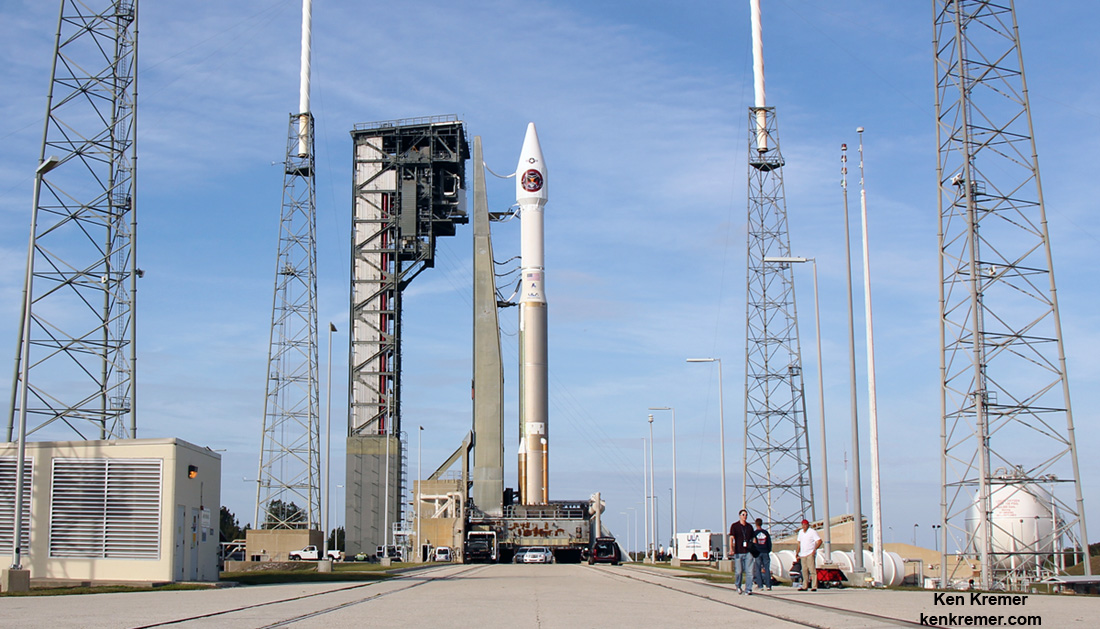

CAPE CANAVERAL AIR FORCE STATION, FL – A U.S. Air Force satellite that will provide vital early warnings on incoming enemy missiles that are critical to the defense of our homeland is set for a spectacular nighttime blastoff on Thursday Jan. 19 from the Florida Space Coast. Update: Launch reset to Jan 20 at 7:42 pm EST
The Atlas V rocket carrying the $1.2 Billion SBIRS GEO Flight 3 infrared imaging satellite counts as the first launch of 2017 by rocket builder United Launch Alliance (ULA) as well as the years first liftoff from Cape Canaveral.
The ULA Atlas V rocket is set for liftoff on Thursday, Jan. 19 from Space Launch Complex-41 at Cape Canaveral Air Force Station in Florida.
The Space Based Infrared System (SBIRS) satellite will be launched to geosynchronous transfer orbit.
It is the third satellite in this series of infrared surveillance satellites that will provide rapid and accurate warning of attacking enemy strategic missiles via infrared signatures – as well as critical targeting data to US missile defense systems to enable swiftly responding launches that will hopefully destroy the attackers in the battle space arena before impacting US cities, infrastructure and military installations.
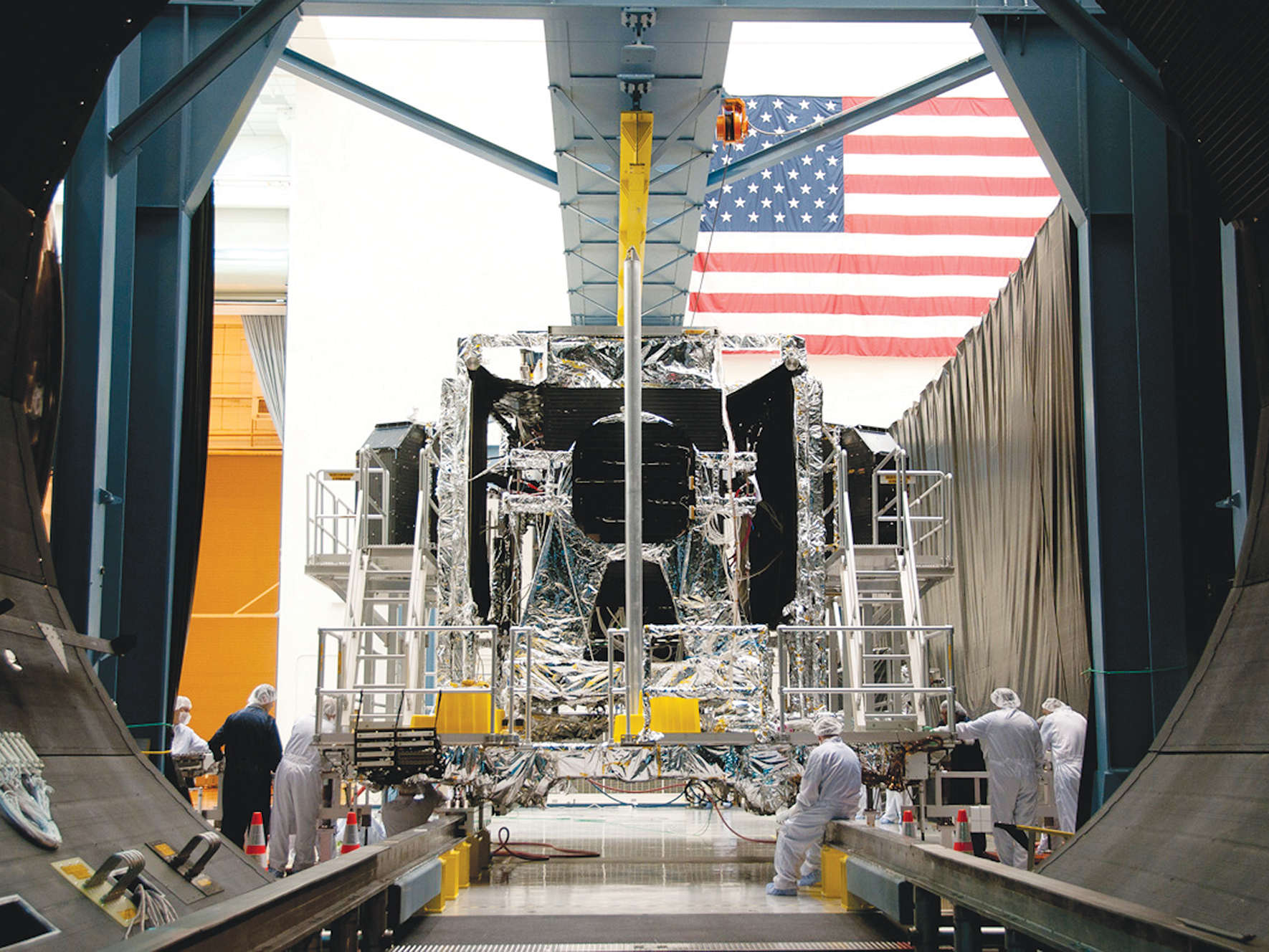
The 20 story tall rocket and payload were rolled out vertically this morning some 1800 feet (600 m) from the Vertical Integration Facility (VIF) processing hangar to pad 41.
With the unpredictable North Korean dictator Kim John Un threatening to launch an upgraded long range intercontinental ballistic missile this year that could potentially strike the United States west coast, SBIRS GEO 3 is more important than ever for our national defense.
The launch window opens at 7:46 p.m. EST (0046 GMT).
The launch window extends for 40 minutes from 7:46-8:26 p.m. EST.
Spectators are flocking into Space Coast area hotels for the super convenient dinnertime blastoff. And they will have a blast ! – if all goes well.
You can watch the Atlas launch live via a ULA webcast. The live launch broadcast will begin about 20 minutes before the planned liftoff at 7:26 p.m. EST here:
http://www.ulalaunch.com/webcast.aspx
www.youtube.com/unitedlaunchalliance and www.ulalaunch.com
The current launch weather forecast for Thursday, Jan. 18, calls for an 80 percent chance of acceptable weather conditions at launch time. The primary concern is for cumulus clouds.
The backup launch opportunity is on Friday.
In case of a scrub for any reason, technical or weather, the chances for a favorable launch drop slightly to 70% GO.
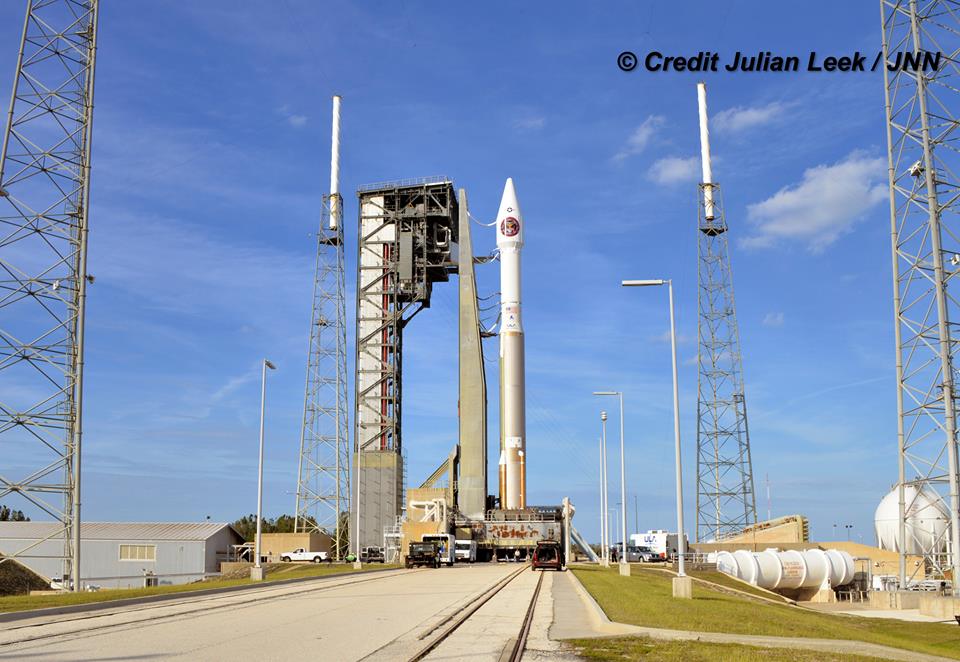
“SBIRS, considered one of the nation’s highest priority space programs, is designed to provide global, persistent, infrared surveillance capabilities to meet 21st century demands in four national security mission areas including: missile warning, missile defense, technical intelligence and battlespace awareness.”
The first SBIRS satellite was launched in 2011.
SBIRS GEO 3 will launch southeast at an inclination of 23.29 degrees. It separate from the 2nd stage 43 minutes after liftoff.
ULA has enjoyed a 100% success rate for this 69th Atlas V launch stretching back to the company’s founding back in 2006.
ULA is a joint venture of Boeing and Lockheed Martin with 116 successful launches under its belt.
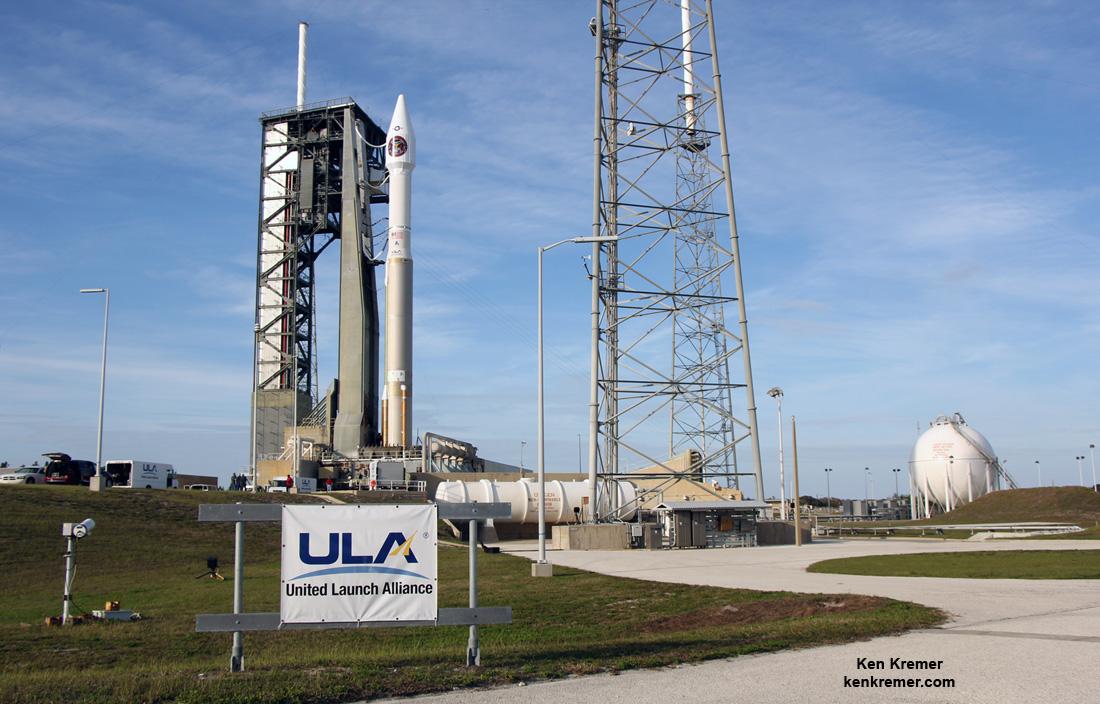
The 194-foot-tall commercial Atlas V booster launched in the 401 rocket configuration with approximately 860,000 pounds of sea level first stage thrust powered by the dual nozzle Russian-built RD AMROSS RD-180 engine. There are no thrust augmenting solids attached to the first stage.
The satellite is housed inside a 4-meter diameter large payload fairing (LPF). The Centaur upper stage is powered by the Aerojet Rocketdyne RL10C engine.
Watch this video showing the detailed mission profile:
Video Caption: An Atlas V 401 configuration rocket will deliver the Air Force’s third Space-Based Infrared System (SBIRS) satellite to orbit. SBIRS, considered one of the nation’s highest priority space programs, is designed to provide global, persistent, infrared surveillance capabilities to meet 21st century demands. Credit: ULA
This mission marks the 34th Atlas V mission in the 401 configuration.
The two prior SBIRS GEO missions also launched on the ULA Atlas V 401 rocket.

The SBIRS team is led by the Remote Sensing Systems Directorate at the U.S. Air Force Space and Missile Systems Center. Lockheed Martin is the prime contractor, with Northrop Grumman as the payload integrator. Air Force Space Command operates the SBIRS system, according to a ULA description.
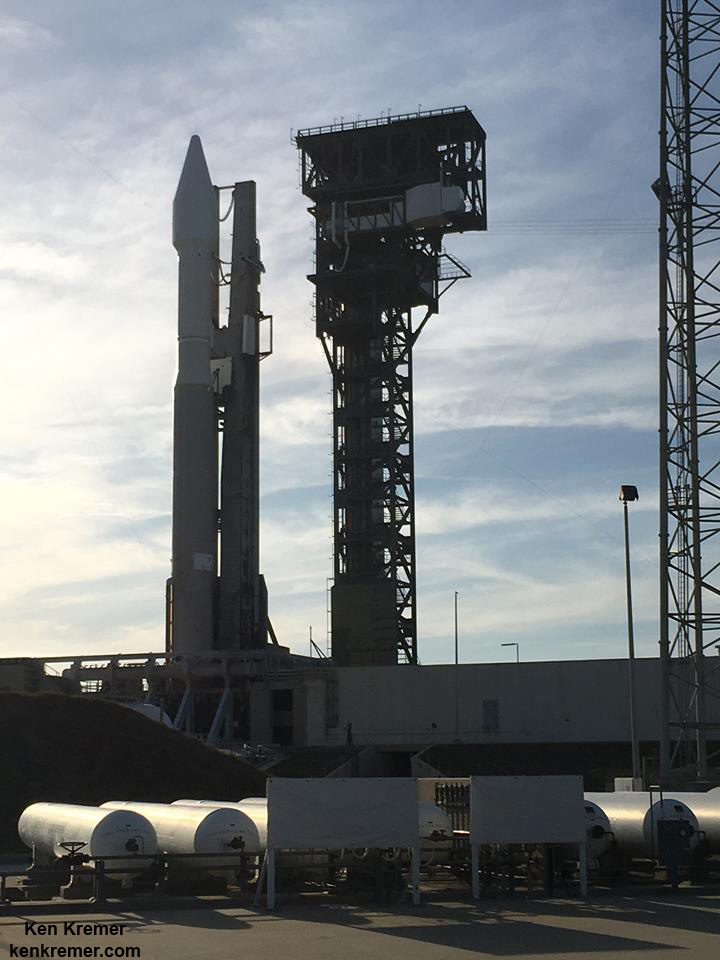
Stay tuned here for Ken’s continuing Earth and Planetary science and human spaceflight news.

………….
Learn more about ULA SBIRS GEO 3 launch, EchoStar launch GOES-R launch, Heroes and Legends at KSCVC, OSIRIS-REx, InSight Mars lander, ULA, SpaceX and Orbital ATK missions, Juno at Jupiter, SpaceX AMOS-6 & CRS-9 rocket launch, ISS, ULA Atlas and Delta rockets, Orbital ATK Cygnus, Boeing, Space Taxis, Mars rovers, Orion, SLS, Antares, NASA missions and more at Ken’s upcoming outreach events:
Jan. 18/20/21: “ULA Atlas SBIRS GEO 3 launch, EchoStar 19 comsat launch, GOES-R weather satellite launch, OSIRIS-Rex, SpaceX and Orbital ATK missions to the ISS, Juno at Jupiter, ULA Delta 4 Heavy spy satellite, SLS, Orion, Commercial crew, Curiosity explores Mars, Pluto and more,” Kennedy Space Center Quality Inn, Titusville, FL, evenings
Fabulous Florida Nighttime Blastoff Delivers Highest-Capacity US Air Force Satcom to Orbit
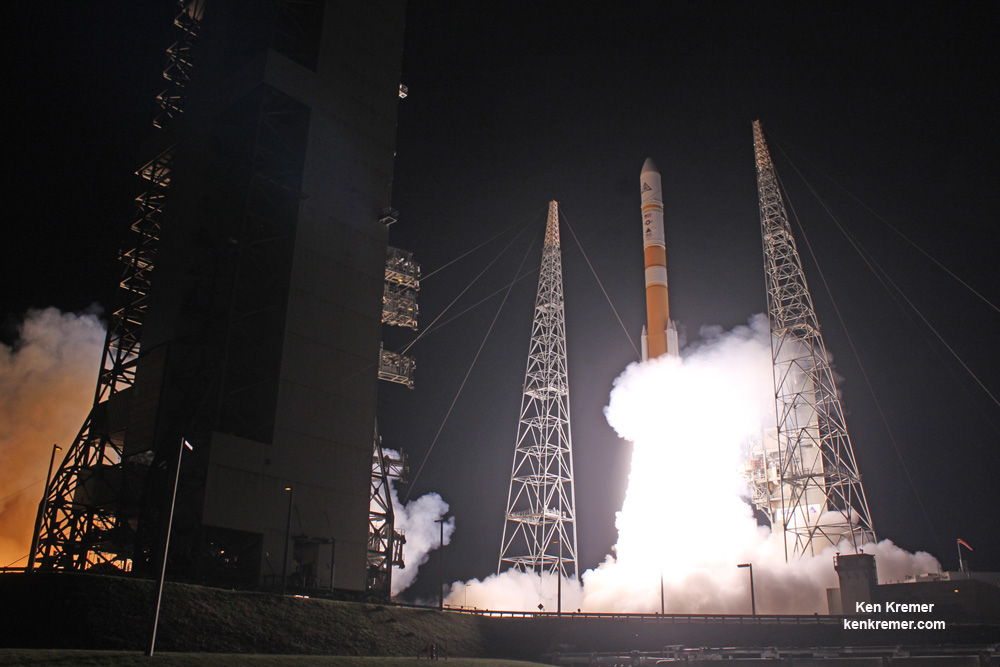

CAPE CANAVERAL AIR FORCE STATION, FL – The highest-capacity US Air Force communications system thundered to orbit during a fabulous nighttime blastoff from the Florida Space Coast, Wednesday evening offering a picture perfect spectacle in addition to a significant boost to military point to point communications.
Hordes of spectators lined space coast beaches and viewing areas to witness the dinnertime launch of the Wideband Global SATCOM (WGS-8) mission for the U.S. Air Force on a United Launch Alliance Delta IV Medium+ rocket at 6:53 p.m. EST on Wednesday, Dec. 7, 2016.
The on time Delta liftoff took place from Space Launch Complex-37 at Cape Canaveral Air Force Station, Florida at the opening of the 49 minute long launch window.
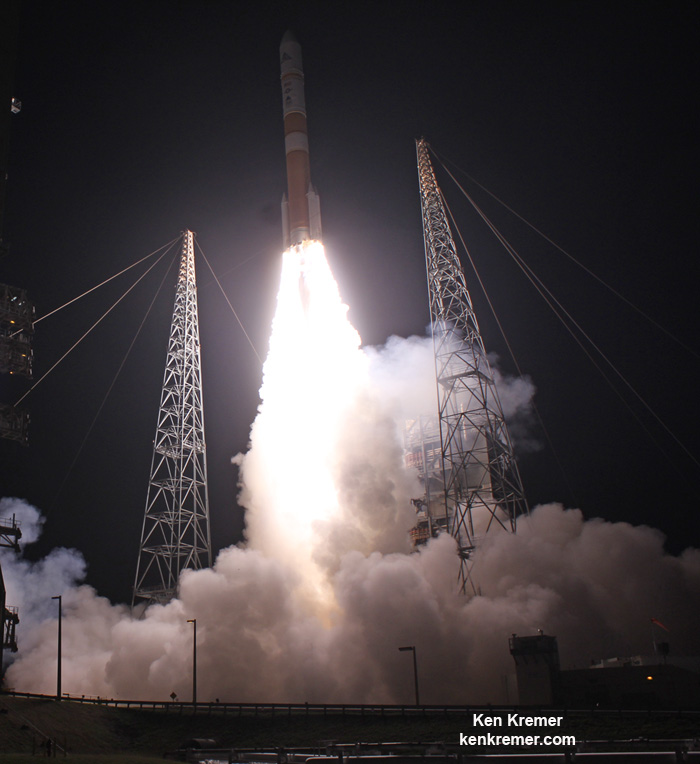
“Thank you to the U.S. Air Force and industry team whose flawless execution enabled today’s successful launch of the WGS-8 mission,” said Laura Maginnis, ULA vice president of Custom Services, in a statement.
“Last week ULA celebrated our anniversary and 10 years of 100% mission success. This evening’s launch epitomizes why our customers continue to entrust ULA to deliver our nation’s most crucial space capabilities.”
WGS-8 was delivered to a supersynchronous transfer orbit atop the United Launch Alliance Delta IV Medium+ rocket.
WGS-8 is the first in a newly upgraded series of a trio of WGS satellites built by Boeing that will nearly double the communications bandwidth of prior WGS models.
The major upgrade is inclusion of the Wideband Digital Channelizer, awarded to Boeing in June 2012.
“Boeing’s eighth Wideband Global SATCOM (WGS) satellite will provide nearly twice as much communications bandwidth as previous WGS satellites due to an upgraded digital payload,” said Boeing in a statement.
The Wideband Digital Channelizer will provide a 90 percent improvement in satellite bandwidth for US military forces.
“Using leading commercial digital circuit technology, the newly upgraded satellite will aid in fulfilling the increasing demand for high-data rate communications of warfighters around the globe.”
WGS-8 was also built for a significantly cheaper price compared to the prior WGS series. WGS-8 cost about $426 million vs. about $570 million for the WGS 7 satellite.
“Not only does WGS-8’s cutting edge digital payload nearly double the satellite’s bandwidth, but the U.S. government was able to realize more than $150 million in savings for WGS-7 through WGS-10 through fixed-price block purchases and commercial operating practices,” said Dan Hart, Boeing vice president, Government Satellite Systems, in a statement.
“We’ve been able to both increase the capability and reduce the per-unit cost with each new WGS satellite we’ve delivered, making WGS, by far, the most cost-effective asset for military communications.”
The 217 foot tall Delta IV Medium+ rocket launched in the (5,4) configuration with a 5 meter diameter payload fairing and powered by one common booster core and four solid rocket motors built by Orbital ATK to augment the first stage.
The common booster core was powered by an RS-68A liquid hydrogen/liquid oxygen engine producing 705,250 pounds of thrust at sea level. A single RL10B-2 liquid hydrogen/liquid oxygen engine powered the second stage.
The booster and upper stage engines are both built by Aerojet Rocketdyne. ULA constructed the Delta IV Medium+ (5,4) launch vehicle in Decatur, Alabama.
The is the sixth flight in the Medium+ (5,4) configuration; all of which were for prior WGS missions.
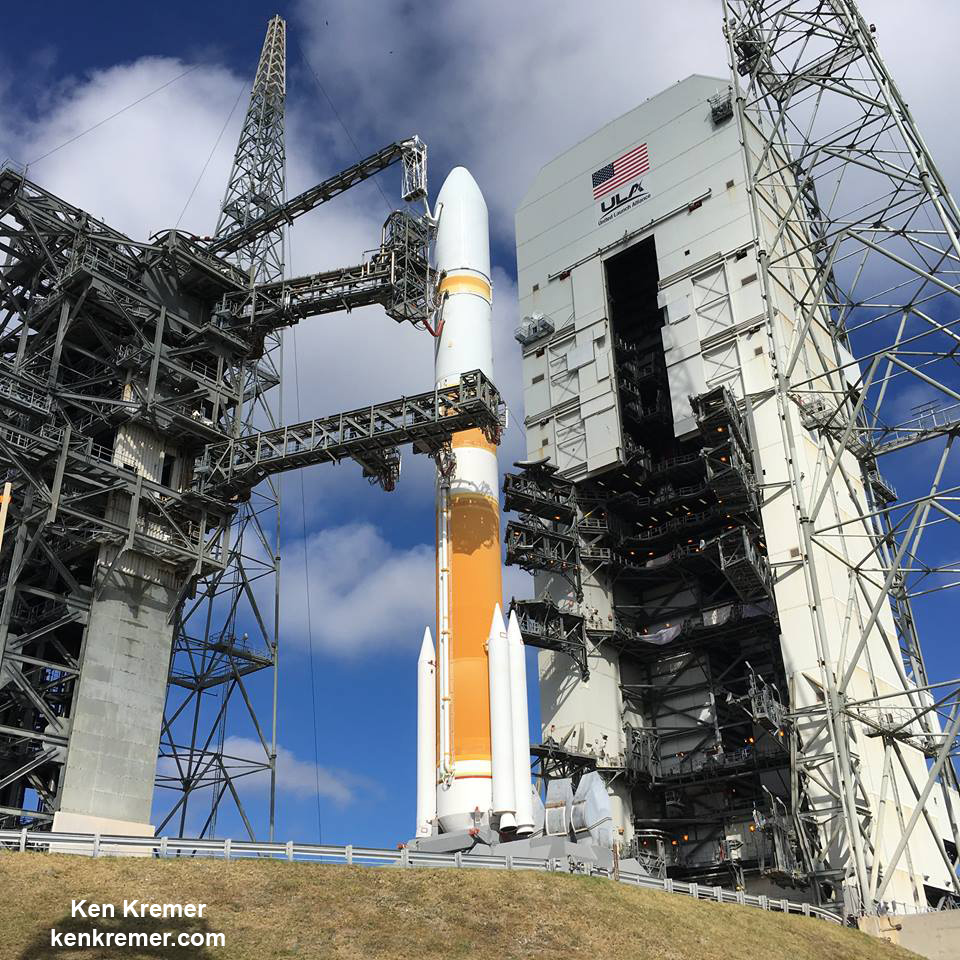
WGS-8 also counts as the first of three launches from the Cape this December. A Pegasus XL rocket will launch on Dec. 12 carrying NASA’s CGYNSS hurricane monitoring satellites. And an Atlas V will launch on Dec. 12 with the EchoStar 23 comsat.
Stay tuned here for Ken’s continuing Earth and planetary science and human spaceflight news.
ULA Atlas V Delivers Final GPS IIF Navigation Satellite to Orbit for USAF – Critical to Military/Civilian Users
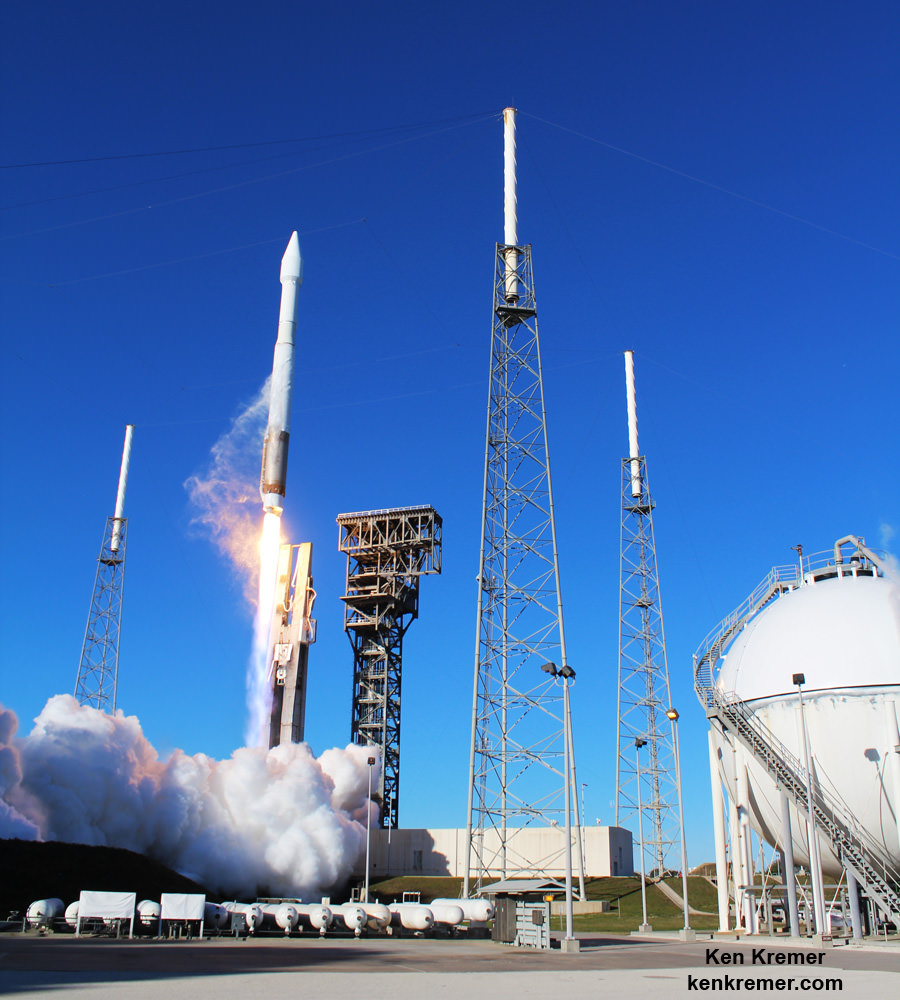

CAPE CANAVERAL AIR FORCE STATION – Despite howling winds and unseasonably frigid temperatures in the ‘sunshine state’, United Launch Alliance’s workhorse Atlas V rocket successfully blasted off this morning, Friday, Feb 5, and delivered the final GPS satellite in the IIF series to orbit for the US Air Force.
The ULA Atlas V carried the Global Positioning System (GPS) IIF-12 navigation satellite to orbit as the booster beautifully pierced the Florida skies – thus completing the constellation of next generation GPS IIF satellites that are critical to both military and civilian users on a 24/7 basis. Continue reading “ULA Atlas V Delivers Final GPS IIF Navigation Satellite to Orbit for USAF – Critical to Military/Civilian Users”
First Atlas Launch of 2016 Set For Blastoff with Air Force GPS Satellite on Feb. 5 – Watch Live
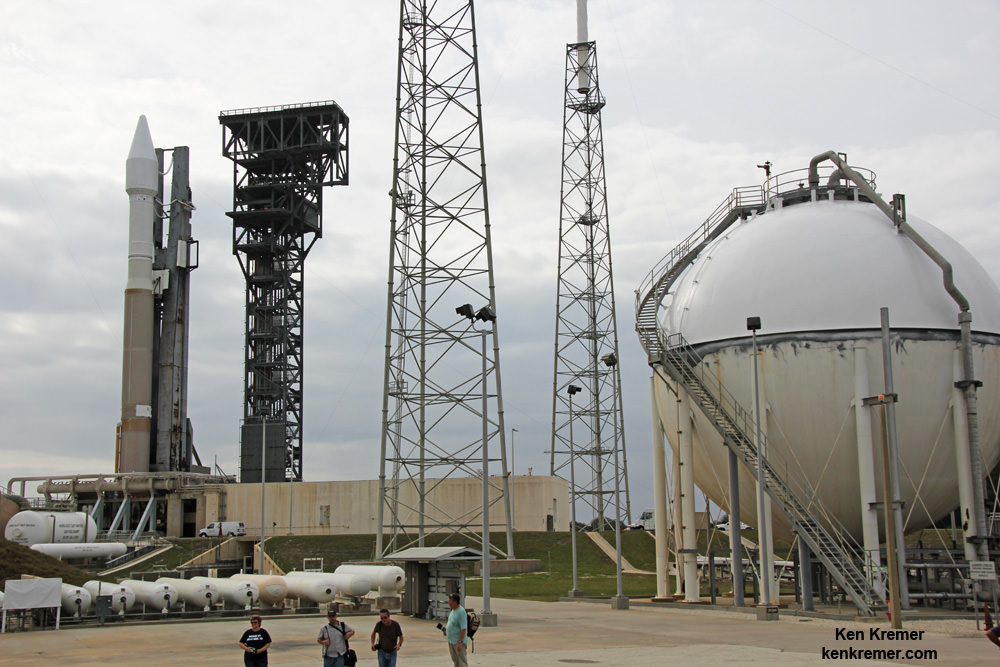

CAPE CANAVERAL AIR FORCE STATION – The first launch of 2016 from Cape Canaveral, Florida, is poised for blastoff on Friday, Feb. 5, and features a United Launch Alliance Atlas V rocket carrying a US Air Force payload that will fortify the GPS constellation of navigation satellites that is critically important to military and civilian users on a 24/7 basis.
The commercial Atlas V rocket was rolled out to Space Launch Complex-41 at Cape Canaveral Air Force Station, Florida this morning, Thursday, Feb. 4. The USAF Global Positioning System GPS IIF-12 satellite is encapsulated in the 4 meter diameter nosecone. Continue reading “First Atlas Launch of 2016 Set For Blastoff with Air Force GPS Satellite on Feb. 5 – Watch Live”
ULA Skips Competitive Bid for Air Force GPS Launch Contract, Door Opens to SpaceX
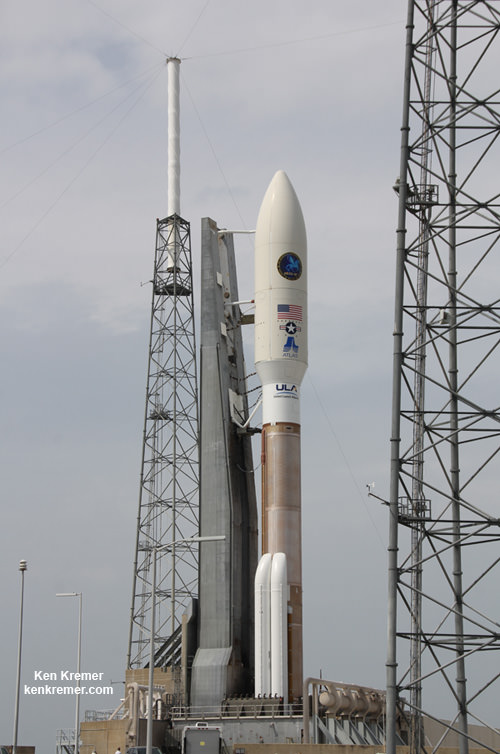
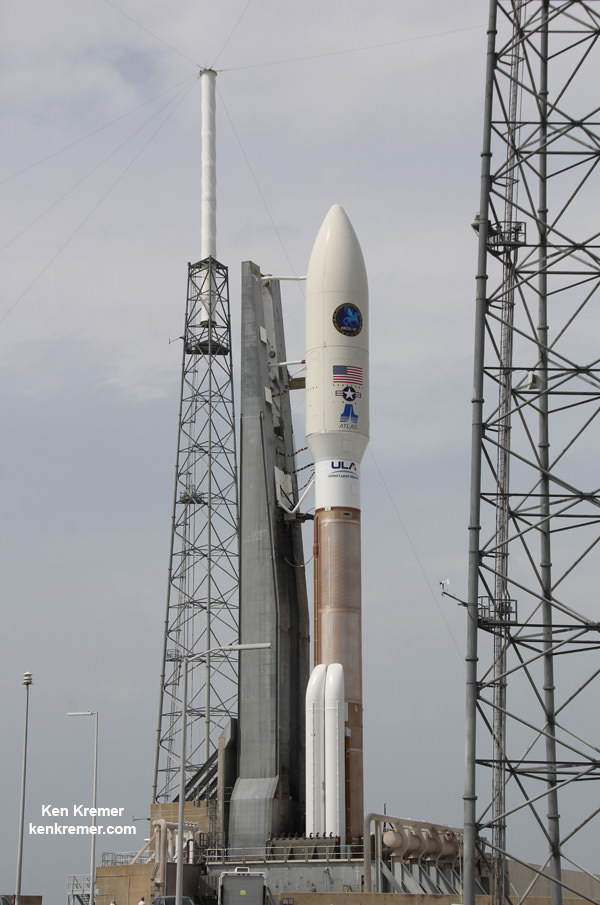
United Launch Alliance (ULA) has decided to skip the bidding competition for launch of the next generation U.S. Air Force GPS military navigation satellites, a company spokesperson confirmed to Universe Today, meaning that rival SpaceX is set to win its first military launch contract as the only other certified contract contender.
Since bids for the new GPS launch contract – which were the first to be opened by the military to a competitive bidding process since 2006 – were due on Monday, Nov. 16, the door has opened for SpaceX to apparently prevail with the launch services contract, by default, since they are the only other American company certified to launch U.S. Air Force military satellites. Continue reading “ULA Skips Competitive Bid for Air Force GPS Launch Contract, Door Opens to SpaceX”
X-37B – The Gift That Keeps On Giving
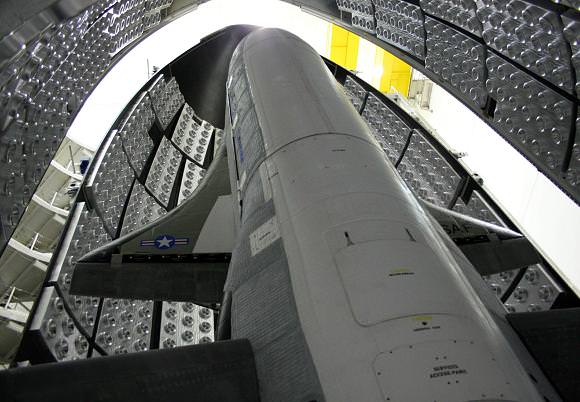
Video provided courtesy of United Launch Alliance
The United States Air Force’s second flight of the X-37B – is headed into extra innings. Known as the Orbital Test Vehicle 2 (OTV-2) this robotic mini space shuttle launched from Cape Canaveral Air Force Station’s Space Launch Complex 41 (SLC-41) on Mar. 5, 2011. Although the U.S. Air Force has kept mum regarding details about the space plane’s mission – it has announced that the OTV-2 has exceeded its endurance limit of 270 days on orbit as of the end of November.
The OTV is launched atop a United Launch Alliance (ULA) Atlas V 501 rocket. The space plane is protected within a fairing until it reaches orbit. After separation, the diminutive shuttle begins its mission.
OTV mission USA-226, as it is officially known, is by all accounts going smoothly and the spacecraft is reported to be in good health. The U.S. Air Force has not announced when OTV-2 will be directed to land.
[/caption]
The fact that the space plane will continue to orbit beyond what its stated limits are highlights that the OTV has greater capabilities than what was officially announced. The first OTV flight launched in April of 2011 and landed 224 days later at Vandenberg Air Force Base in California. The U.S. Air Force is undoubtedly being more judicious with fuel stores on board the robotic spacecraft, allowing for a longer duration flight.
Much like NASA’s retired fleet of space shuttle orbiters, the OTV has a payload bay that allows for payloads and experiments to be conducted on-orbit. What payloads the U.S. Air Force has had on either mission – remains a secret.
Boeing has announced that the X-37B could be modified to conduct crewed missions to and from orbit. Tentatively named the X-37C, this spacecraft would be roughly twice the size of its unmanned cousin. If this variant goes into service it would be used to transport astronauts to and from the orbiting International Space Station (ISS).
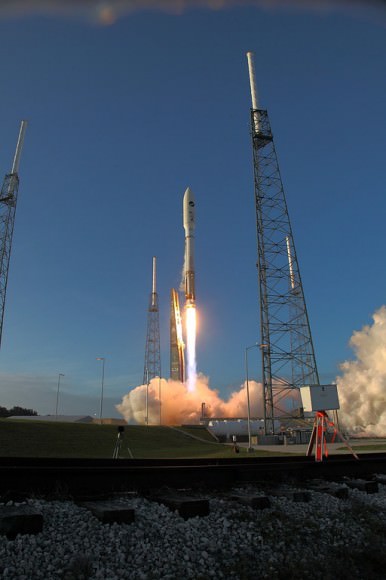
The X-37B has become a bit controversial of late. Members of the Chinese press have stated that the space plane raises concerns of an arms race in space. Xinhua News Agency and China Daily have expressed concern that the OTVs could be used to deliver weapons to orbit. The Pentagon has flatly denied these allegations. The clandestine nature of these flights have led to a wide variety of theories as to what the OTVs have been used to ferry to orbit.


